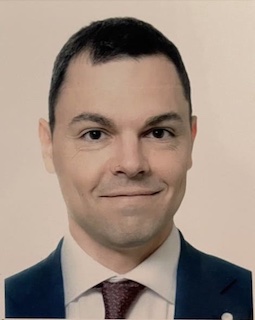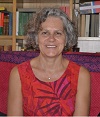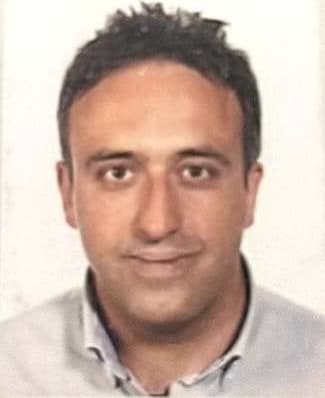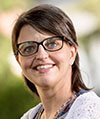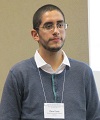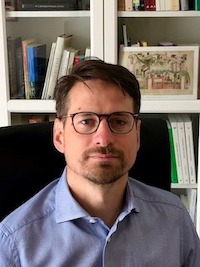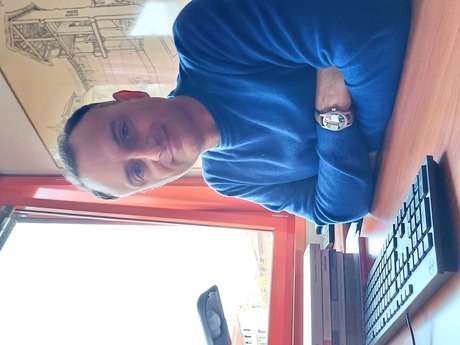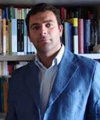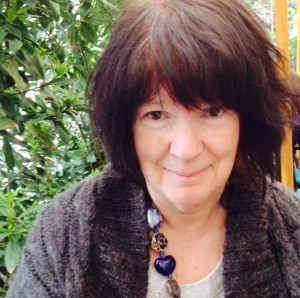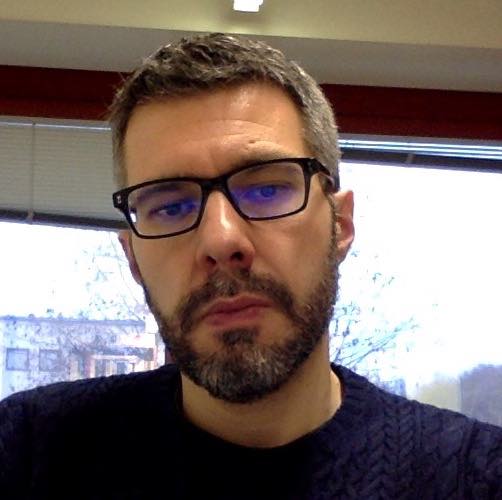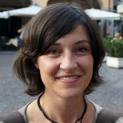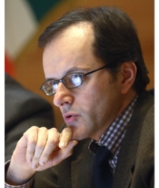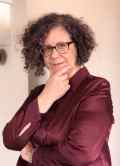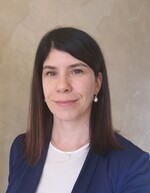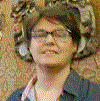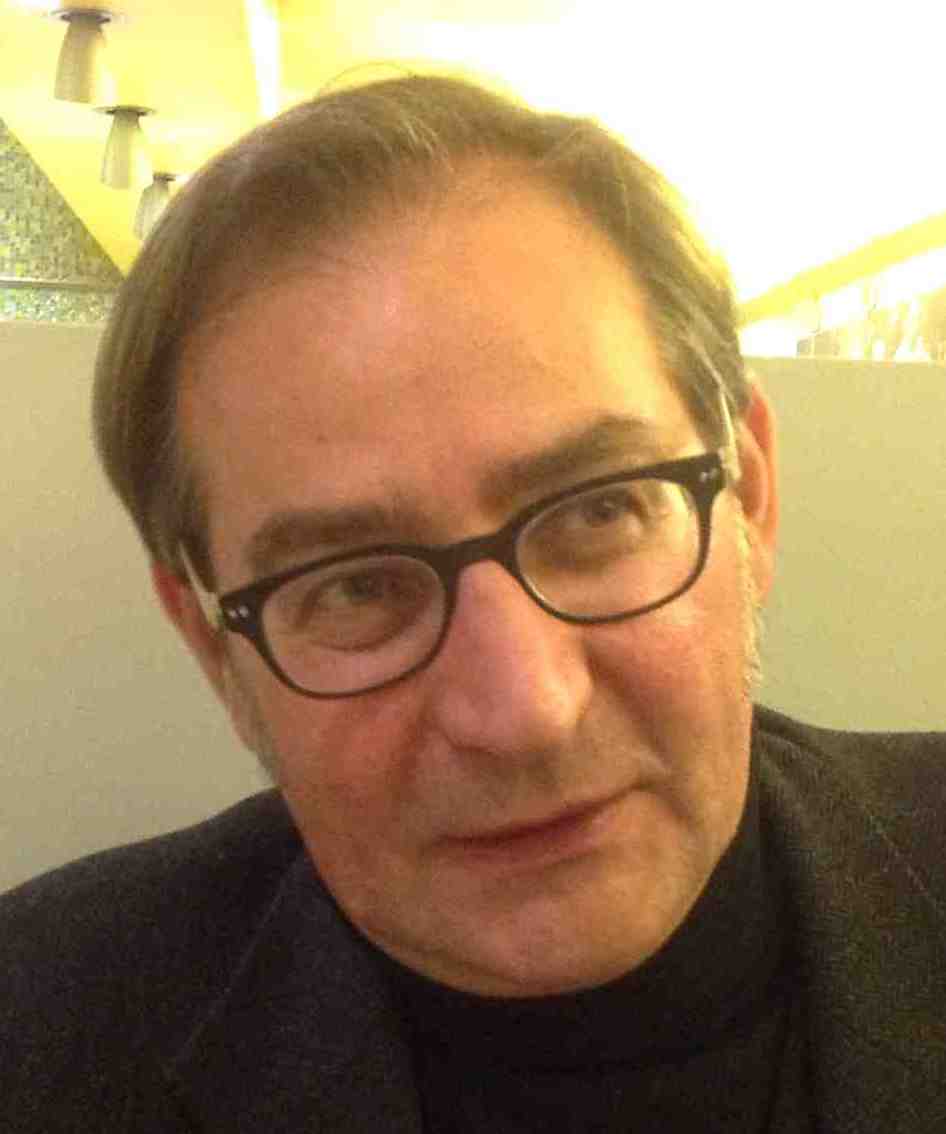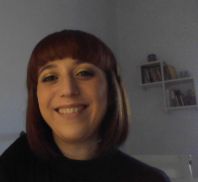Studying at the University of Verona
Here you can find information on the organisational aspects of the Programme, lecture timetables, learning activities and useful contact details for your time at the University, from enrolment to graduation.
Academic calendar
The academic calendar shows the deadlines and scheduled events that are relevant to students, teaching and technical-administrative staff of the University. Public holidays and University closures are also indicated. The academic year normally begins on 1 October each year and ends on 30 September of the following year.
Course calendar
The Academic Calendar sets out the degree programme lecture and exam timetables, as well as the relevant university closure dates..
| Period | From | To |
|---|---|---|
| I semestre (Lingue e letterature straniere) | Sep 27, 2021 | Jan 8, 2022 |
| Annuale (Lingue e letterature straniere) | Sep 27, 2021 | May 28, 2022 |
| II semestre (Lingue e letterature straniere) | Feb 14, 2022 | May 28, 2022 |
| Session | From | To |
|---|---|---|
| ESAMI LINGUE - sessione invernale | Jan 10, 2022 | Feb 12, 2022 |
| ESAMI LINGUE - sessione estiva | May 30, 2022 | Jul 23, 2022 |
| ESAMI LINGUE - sessione autunnale | Aug 29, 2022 | Sep 24, 2022 |
| Session | From | To |
|---|---|---|
| LAUREE LINGUE - sessione autunnale (a.a. 2020-2021) | Nov 8, 2021 | Nov 13, 2021 |
| LAUREE LINGUE - sessione straordinaria (a.a. 2020-2021) | Mar 28, 2022 | Apr 2, 2022 |
| LAUREE LINGUE - sessione estiva (a.a. 2021-2022) | Jul 11, 2022 | Jul 16, 2022 |
Exam calendar
Exam dates and rounds are managed by the relevant Foreign Languages and Literatures Teaching and Student Services Unit.
To view all the exam sessions available, please use the Exam dashboard on ESSE3.
If you forgot your login details or have problems logging in, please contact the relevant IT HelpDesk, or check the login details recovery web page.
Should you have any doubts or questions, please check the Enrollment FAQs
Academic staff
 daniele.caccin2@unibo.it
daniele.caccin2@unibo.it
 silvia.cavalieri@univr.it
silvia.cavalieri@univr.it
 piero.costaleon@univr.it
piero.costaleon@univr.it
 elisa.dallarosa@univr.it
elisa.dallarosa@univr.it
 wenwen.huang@univr.it
wenwen.huang@univr.it
 neliana.orlandi@univr.it
neliana.orlandi@univr.it
 sara.paolini@univr.it
sara.paolini@univr.it
 elena.rango@univr.it
elena.rango@univr.it
 cecilia.sideri@univr.it
cecilia.sideri@univr.it
 tania.triberio@univr.it
tania.triberio@univr.it
Study Plan
The Study Plan includes all modules, teaching and learning activities that each student will need to undertake during their time at the University.
Please select your Study Plan based on your enrollment year.
1° Year
| Modules | Credits | TAF | SSD |
|---|
German literature and culture 1
German literature and culture 1
2° Year activated in the A.Y. 2022/2023
| Modules | Credits | TAF | SSD |
|---|
English literature and culture 2
French literature and culture 2
German literature and culture 2
Spanish literature and culture 2
English literature and culture 2
French literature and culture 2
German literature and culture 2
Spanish literature and culture 2
Geography of communication and international trade
Italian literature and culture
Modern and Contemporary Economic History
Theory and Techniques of communication
3° Year activated in the A.Y. 2023/2024
| Modules | Credits | TAF | SSD |
|---|
Comparative and European Public law
Principles of international marketing
| Modules | Credits | TAF | SSD |
|---|
German literature and culture 1
German literature and culture 1
| Modules | Credits | TAF | SSD |
|---|
English literature and culture 2
French literature and culture 2
German literature and culture 2
Spanish literature and culture 2
English literature and culture 2
French literature and culture 2
German literature and culture 2
Spanish literature and culture 2
Geography of communication and international trade
Italian literature and culture
Modern and Contemporary Economic History
Theory and Techniques of communication
| Modules | Credits | TAF | SSD |
|---|
Comparative and European Public law
Principles of international marketing
| Modules | Credits | TAF | SSD |
|---|
Legend | Type of training activity (TTA)
TAF (Type of Educational Activity) All courses and activities are classified into different types of educational activities, indicated by a letter.
Spanish literature and culture 2 [Tur] (2022/2023)
Teaching code
4S002908
Academic staff
Coordinator
Credits
9
Language
Spanish
Scientific Disciplinary Sector (SSD)
L-LIN/05 - SPANISH LITERATURE
Period
I semestre (Lingue e letterature straniere) dal Sep 26, 2022 al Dec 23, 2022.
Learning objectives
The course aims at providing students of the Bachelor's degree in Languages and Cultures for Tourism and International Commerce with an adequate knowledge of the Spanish culture of different periods, focusing on its literary, historical, geographical and anthropological aspects. At the end of the course, students will acquire a sound knowledge of the issues covered by the module (historical and cultural context, main writers/texts/movements/genres of the period examined). With regard to the applied and communication skills, students will be able to critically comment the primary texts listed in the syllabus, in relation both to their historical and cultural context and literary specificities, as well as to express the acquired knowlegde in a clear and consistent way.
Prerequisites and basic notions
Students must have passed the exams of “Spanish Literature and Culture 1” and “Spanish Language 1” in order to take the examination.
Program
The course, taught in Spanish, aims at providing students with an introduction to the Spanish culture and literature of the first half of the 19th century, through the reading of some canonical works of Spanish Romanticism, that will illustrate the historical, cultural and literary specificities of the period examined. The course program is divided in two parts, as detailed below:
Part I: An introduction to the historical and cultural context (spanning from the Independence Spanish War to the reign of Isabel II) and a brief outline of the Spanish Romantic movement (crucial themes, most representative literary genres and works, main authors and authoresses).
A detailed syllabus of the topics dealt with during the lectures will be given at the beginning of the course, together with the calendar of the scheduled lessons, and will be available in the Moodle e-learning repository.
Part II: Primary texts.
MARIANO JOSÉ DE LARRA, Artículos varios, ed. de E. Correa Calderón, Madrid, Castalia, 1989 (or M. J. De Larra, Artículos, ed. de Enrique Rubio, Madrid, Cátedra, 1993). Only the texts listed below:
-“Los barateros, o el desafío y la pena de muerte”
-“El casarse pronto y mal”
-“El castellano viejo”
-“En este país”
-“Jardines públicos”
-“El mundo todo es máscaras. Todo el año es Carnaval”
-“La Nochebuena de 1836. Yo y mi criado. Delirio filosófico”
“¿Quién es el público y dónde se le encuentra?”
-“Ventajas de las cosas a medio hacer”
-“Vuelva usted mañana”
JOSÉ DE ESPRONCEDA, El diablo mundo; El Pelayo; Poesías, ed. de Domingo Ynduráin, Madrid, Cátedra, 1992 (only the texts listed below):
-“A la noche”
-“Himno al sol”
-“Canción del pirata”
-“A la patria”
-“A una estrella”
-soneto “Fresca, lozana, pura y olorosa…”
-“A Jarifa en una orgía”
-“El verdugo”
“El Diablo mundo”: “Introducción al poema” e Canto II (“A Teresa”)
JOSÉ ZORRILLA, Don Juan Tenorio, ed. de Aniano Peña, Madrid, Cátedra, 1998 (integral reading)
Bibliography (mandatory):
-F. B. Pedraza Jiménez-M. Rodríguez Cáceres, Las épocas de la literatura española, Barcelona, Ariel, 2002: cap. 6 (El Romanticismo).
- R. Navas Ruiz, El romanticismo español, 4ª ed. renovada, Madrid, Cátedra, 1990: chapters X (Espronceda), XI (Larra), XIII (Zorrilla).
-F. Calvo Serraller, La imagen romántica de España, in “Cuadernos hispanoamericanos”, 332, 1978, pp. 240-260.
N.B. All the references listed in the syllabus (handbook, primary texts and critical bibliography) are available at departmental “Walter Busch” library or at “A. Frinzi” central library. Further readings (optional) on the topics covered by the module will be indicated during the lectures.
Pleased be advised: the program applies to all students, both attending and non- attending lectures. Students non- attending lectures should contact the teacher by e-mail for further explanations; they are strongly advised to read the critical introductions to the primary texts (see the suggested editions above, Part II) and to consult the additional materials available in the MOODLE e-learning repository and in the website “Biblioteca Virtual Miguel de Cervantes”, see sections “Literature/Authors/Larra/Espronceda/Zorrilla” (http://www.cervantesvirtual.com).
Bibliography
Didactic methods
Lectures in presence. All teaching materials (slides, texts, images, etc.), that will be used in class, will be available for download from the MOODLE e-learning repository as the lessons take place. These same materials can be used for the recovery of lessons by students who are in isolation because of positivity to the Covid.
Learning assessment procedures
For all students (attending, non-attending and Erasmus incoming), the final exam will consist in a single oral discussion (in Spanish) on the whole program. Duration of the exam: 45 min. aprox.
Evaluation criteria
The assessment will consider: the depth of the knowledge of the module’s topics (historical and cultural context, main writers/texts/movements/genres of the period examined, Part I); the ability to critically comment the primary texts, listed in the syllabus, in relation both to their historical/ cultural context and literary specificities (Part II); the ability to express oneself and discuss in a clear and consistent way. The final mark will be expressed in thirtieth.
Criteria for the composition of the final grade
No mid-term examination will be carried out. The final grade will be the one resulting from the oral exam
Exam language
Spagnolo
Type D and Type F activities
Nei piani didattici di ciascun Corso di studio è previsto l’obbligo di conseguire un certo numero di CFU di tipologia D e di tipologia F.
CFU D (attività a scelta dello studente)
I CFU D possono essere acquisiti mediante:
- insegnamenti non obbligatori nel proprio piano didattico (previa approvazione del Presidente del Collegio didattico per insegnamenti non selezionabili in autonomia)
- attività accreditate dal Collegio didattico
- competenze linguistiche (diverse o ulteriori) rispetto a quelle obbligatorie
- tirocini o stage
- TALC (competenze trasversali).
Competenze trasversali TALC
Nota bene: i corsi TALC sono riconosciuti solo come CFU D.
Il numero di CFU D va calcolato complessivamente sull’intero triennio/biennio e non è legato all'annualità.
CFU F
I CFU F sono solitamente relativi ad abilità informatiche, competenze linguistiche, stage e tirocini e ulteriori attività formative accreditate in questa tipologia dal Collegio Didattico.
Nel corso di laurea in Lingue e culture per il turismo e il commercio internazionale sono previste le seguenti tipologie:
- 3 CFU per terza lingua (livello B1)
- 3 CFU per informatica
- 6 CFU per stage obbligatorio.
Le competenze informatiche possono essere acquisite attraverso:
- il superamento della prova pratica presso le aule informatiche di Ateneo,
- la frequenza dei corsi attivati da scuole e centri accreditati dall’AICA (Associazione Italiana per l’Informatica e il Calcolo Automatico) o riconosciuti dalla Provincia e dalla Regione e superamento della relativa prova finale. Le domande per il riconoscimento delle competenze informatiche acquisite precedentemente vengono esaminate dalla Commissione per il riconoscimento delle Competenze Informatiche.
Le attività di stage sono finalizzate a far acquisire allo studente una conoscenza diretta in settori di particolare utilità per l’inserimento nel mondo del lavoro e per l’acquisizione di abilità specifiche d’interesse professionale.
Documents and news
-
 Domanda di riconoscimento crediti su certificazioni esterne di abilità-competenze informatiche
(pdf, it, 524 KB, 16/06/21)
Domanda di riconoscimento crediti su certificazioni esterne di abilità-competenze informatiche
(pdf, it, 524 KB, 16/06/21)
| years | Modules | TAF | Teacher |
|---|---|---|---|
| 1° 2° 3° | Introduction to robotics for humanities students | D |
Paolo Fiorini
(Coordinator)
|
To discover all the teaching activities accredited by the foreign teaching college click here
Career prospects
Module/Programme news
News for students
There you will find information, resources and services useful during your time at the University (Student’s exam record, your study plan on ESSE3, Distance Learning courses, university email account, office forms, administrative procedures, etc.). You can log into MyUnivr with your GIA login details: only in this way will you be able to receive notification of all the notices from your teachers and your secretariat via email and soon also via the Univr app.
Student login and resources
Gestione carriere
Assegnazione tutore
Attività accreditate D/F
Calendario didattico dettagliato
Cambio lingua curriculare
Competenze informatiche
Competenze linguistiche (prima e seconda lingua)
Competenze linguistiche in triennale (terza lingua CFU F)
Compilazione del piano didattico
Corso di Lingua portoghese
Erasmus+ e altre esperienze all'estero
Linguistic training CLA
Presentazione dei corsi di studio e Open day
Graduation
List of theses and work experience proposals
| Stage | Research area |
|---|---|
| PROGETTO MAMBRINO Stage per bibliografia | Various topics |
Saperi minimi
Stage e tirocini
Nel piano didattico della laurea triennale in Lingue per il turismo e il commercio internazionale (L12) è previsto un periodo di stage obbligatorio (CFU 6) in organizzazioni imprenditoriali.
Le attività di stage sono finalizzate a far acquisire allo studente una conoscenza diretta in settori di particolare interesse per l’inserimento nel mondo del lavoro e per l’acquisizione di abilità professionali specifiche.
Le attività di stage sono svolte sotto la diretta responsabilità di un singolo docente presso studi professionali, enti della pubblica amministrazione, aziende accreditate dall’Ateneo veronese.
I crediti maturati in seguito ad attività di stage saranno attribuiti secondo quanto disposto nel dettaglio dal “Regolamento d’Ateneo per il riconoscimento dei crediti maturati negli stage universitari” vigente.
- Tutte le informazioni in merito agli stage per futuri studenti sono disponibili alla pagina Stage e tirocini.
- Tutte le informazioni in merito agli stage per studenti iscritti sono pubblicate in MyUnivr - come fare per - stage e tirocini.
- Tutte le informazioni in merito agli stage per le aziende sono disponili alla pagina Stage e tirocini per azienze.
Ulteriori informazioni al seguente link https://www.univr.it/it/i-nostri-servizi/gestione-carriere-studenti-lingue-e-letterature-straniere/stage-e-tirocini-lingue-e-letterature-straniere

 +39 045802 8409
+39 045802 8409
